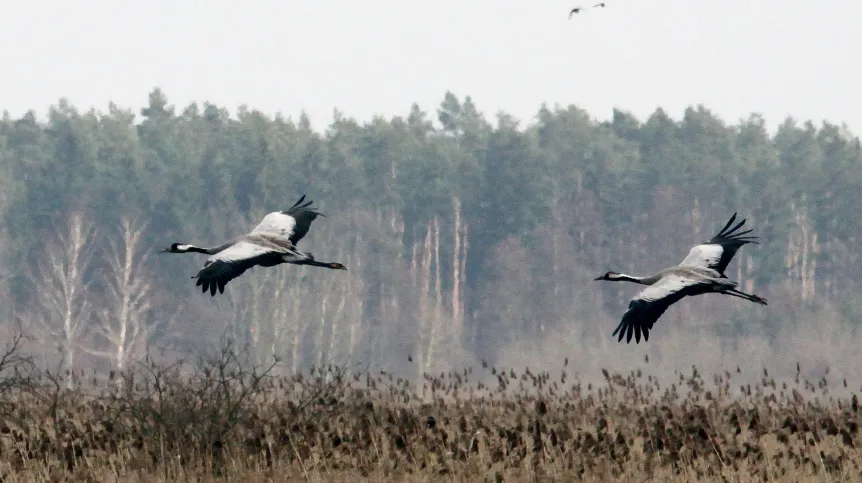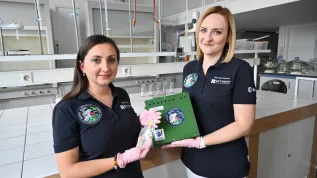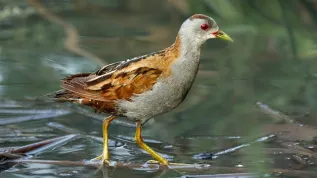
Nature lovers from Warmia and Mazury are already watching the flocks of wild geese, cranes and larks. Ornithologist from the Polish Society for the Protection of Birds told PAP that these species appeared in the region of two to three weeks earlier than usual.
Nature lovers from Warmia and Mazury boast in social media that they have already seen cranes and wild geese. "These birds would usually arrive in the end of February, sometimes in mid-February. This year, they are here a week or two earlier than in previous years" - said Sebastian Menderski and added that they are large birds, so a possible return of winter is not a threat to them. "They can dig for food under the snow" - he explained.
Surprising for Menderski is the arrival of larks, which in Warmia and Mazury are normally observed only in the beginning of March. "They are small birds, which in the case of the return of winter will either fly back a little to the south, or they will not survive. They will not be able to cope when the snow falls" - said the ornithologist and added that he hoped that the arrival of larks ... would not herald the arrival of spring. "Because of minimal snowfall, we have very low water. We have a negative balance already in the beginning of spring, we could use at least half a meter of snow, because otherwise the nature and the farmers will suffer" - he explained.
There is also less water in the Mazury Lakes, on which for the most part there is no ice. "The level of lakes is about 30 cm lower in comparison with the levels two or three years ago" - told PAP the Mazury Volunteer Rescue spokesman Jarosław Sroka.
Mazury lake are only partially covered with ice, which is thin and fragile. Masurian rescuers warn to not enter such patches of ice under any circumstances.
PAP - Science and Scholarship in Poland
jwo/ pz/
tr. RL













